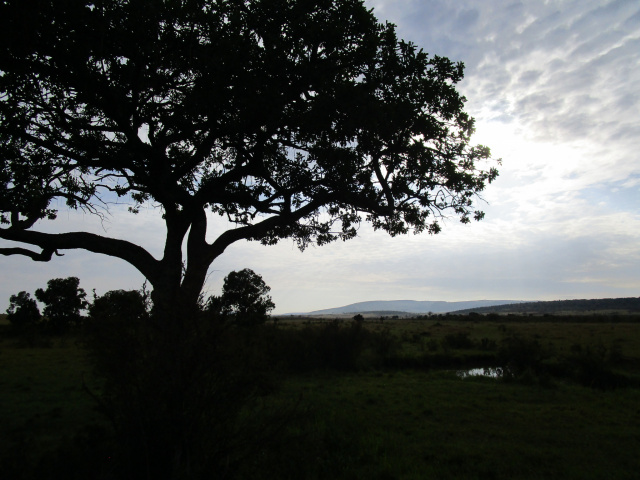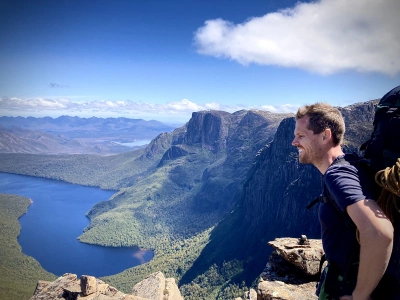Maasai Mara
Maasai Mara, known locally as The Mara, is named after the Maasai, the ancestral peoples of this landscape.
The Mara hosts the Great Migration, the annual migration of millions of wildebeest, Zebras, gazelles and other plains animals to follow the seasonal availability of grasses for grazing.
Maasai Mara hosts important populations of some of Africa’s most extraordinary wildlife, including the African bush elephant, cheetah, the African leopard, lions, hyenas, zebra, rhinoceros, zebras and Thomson’s gazelle. Crocodiles and hippopotami frequent the major rivers. A suite of smaller mammals including honey badgers, mongoose, black-backed jackals amongst many others also frequent this landscape. Vultures, ostriches, long-crested eagles and hornbills are amongst the more than 400 species of birds that also live in The Mara.
The Mara is bound by Maasai pastoral ranches to the north, east and west, and the Serengeti to the south. To the west lays the Esoit (Siria) Escarpment of the East African Rift – the “Great Rift” which runs 5,600km from the Ethiopian Red Sea, south through the Ethiopian highlands, Kenya, Tanzania, Malawi and then running to Mozambique. The Mara is largely made up of open grasslands with trees and shrubs covering the hills and fringing the small creeks, rivers and drainage lines.
The Mara is part of the traditional lands of the Maasai people, “Mara” meaning “spotted” in the Maasai language, descriptive of the short scrubby trees that spot the plains. The Maasai were pushed off some of their traditional lands when conservation reserves were originally established in this region, but still more than 500,000 Maasai people live around the Park and continue to rely off their lands to graze their cattle and sustain their way of life.
“… The Wilderness experience is the one way of reconnecting. You are in the process of confronting yourself, and not only is there the walking, but there’s the sleeping on this red earth of Africa, this very ancient continent on which we all evolved, and which I call the landscape of the human soul ” – Dr Ian Player

There is a growing human population around the Maasai Mara which is putting intense pressure on its wildlife and landscapes. Tourist lodges have been erecting electric fencing which is limiting the free movement of wildlife. Shanty towns are being built around the region ad hoc. Wheat fields are being established and upstream rivers are being polluted through fertiliser use.
More intensive grazing around the park is pitting the needs of the wildlife against domesticated animals, and there have been increased wildlife losses through poaching. There has therefore unfortunately been a dramatic decline in the numbers of many critical large wildlife species that frequent the park in recent years.
Whilst the Masai people traditionally occupied much of western Kenya, the legacy of forced evictions by the British has massively impacted on their population and pushed many into a tension with conservation as they are forced to graze more intensively to try to survive.
In response to some of these conservation challenges, a number of private conservancies have been established to try to conserve holdings of land in the Maasai Mara for conservation, wildlife groups work with private landholders to help conserve wildlife on private land.
The Maasai Wilderness Conservation Trust works to protect the legendary ecosystems and astounding biodiversity of East Africa through conservation efforts that directly benefit wildlife, wilderness and the local Maasai communities: http://maasaiwilderness.org
The Maasai Mara Wildlife Conservancies Association (MMWCA) is a membership organisation for current and future wildlife conservancies in the Greater Maasai Mara, and works to conserve the greater Maasai Mara ecosystem through a netwo9rk of community protected areas. https://maraconservancies.org
The Kenya Wildlife Conservancies Association works with landowners and commumnities to conserve and manage wildlife and their habitat outside state-protected areas. https://kwcakenya.com
Conserve Maasai Mara works to advocate against illegal poaching in the Maasai Mara, to solve human-wildlife conflicts, to build awareness about how to care for the Mara and to promote environmental conservation activities. https://conservemaasaimara.org

Phill Pullinger
Maasai Mara, known locally as The Mara, is named after the Maasai, the ancestral peoples of this landscape.
The Mara hosts the Great Migration, the annual migration of millions of wildebeest, Zebras, gazelles and other plains animals to follow the seasonal availability of grasses for grazing.
Maasai Mara hosts important populations of some of Africa’s most extraordinary wildlife, including the African bush elephant, cheetah, the African leopard, lions, hyenas, zebra, rhinoceros, zebras and Thomson’s gazelle. Crocodiles and hippopotami frequent the major rivers. A suite of smaller mammals including honey badgers, mongoose, black-backed jackals amongst many others also frequent this landscape. Vultures, ostriches, long-crested eagles and hornbills are amongst the more than 400 species of birds that also live in The Mara.
The Mara is bound by Maasai pastoral ranches to the north, east and west, and the Serengeti to the south. To the west lays the Esoit (Siria) Escarpment of the East African Rift – the “Great Rift” which runs 5,600km from the Ethiopian Red Sea, south through the Ethiopian highlands, Kenya, Tanzania, Malawi and then running to Mozambique. The Mara is largely made up of open grasslands with trees and shrubs covering the hills and fringing the small creeks, rivers and drainage lines.
The Mara is part of the traditional lands of the Maasai people, “Mara” meaning “spotted” in the Maasai language, descriptive of the short scrubby trees that spot the plains. The Maasai were pushed off some of their traditional lands when conservation reserves were originally established in this region, but still more than 500,000 Maasai people live around the Park and continue to rely off their lands to graze their cattle and sustain their way of life.
“… The Wilderness experience is the one way of reconnecting. You are in the process of confronting yourself, and not only is there the walking, but there’s the sleeping on this red earth of Africa, this very ancient continent on which we all evolved, and which I call the landscape of the human soul ” – Dr Ian Player

There is a growing human population around the Maasai Mara which is putting intense pressure on its wildlife and landscapes. Tourist lodges have been erecting electric fencing which is limiting the free movement of wildlife. Shanty towns are being built around the region ad hoc. Wheat fields are being established and upstream rivers are being polluted through fertiliser use.
More intensive grazing around the park is pitting the needs of the wildlife against domesticated animals, and there have been increased wildlife losses through poaching. There has therefore unfortunately been a dramatic decline in the numbers of many critical large wildlife species that frequent the park in recent years.
Whilst the Masai people traditionally occupied much of western Kenya, the legacy of forced evictions by the British has massively impacted on their population and pushed many into a tension with conservation as they are forced to graze more intensively to try to survive.
In response to some of these conservation challenges, a number of private conservancies have been established to try to conserve holdings of land in the Maasai Mara for conservation, wildlife groups work with private landholders to help conserve wildlife on private land.
The Maasai Wilderness Conservation Trust works to protect the legendary ecosystems and astounding biodiversity of East Africa through conservation efforts that directly benefit wildlife, wilderness and the local Maasai communities: http://maasaiwilderness.org
The Maasai Mara Wildlife Conservancies Association (MMWCA) is a membership organisation for current and future wildlife conservancies in the Greater Maasai Mara, and works to conserve the greater Maasai Mara ecosystem through a netwo9rk of community protected areas. https://maraconservancies.org
The Kenya Wildlife Conservancies Association works with landowners and commumnities to conserve and manage wildlife and their habitat outside state-protected areas. https://kwcakenya.com
Conserve Maasai Mara works to advocate against illegal poaching in the Maasai Mara, to solve human-wildlife conflicts, to build awareness about how to care for the Mara and to promote environmental conservation activities. https://conservemaasaimara.org
You might like...

Dr Sally Bryant: a lifetime in the field

Collaborative work key to Nature campaign success

Streamlining Conservation through Social Action

Our mission is to keep Manly Dam wild
Newsletter
Sign up to keep in touch with articles, updates, events or news from Kuno, your platform for nature
